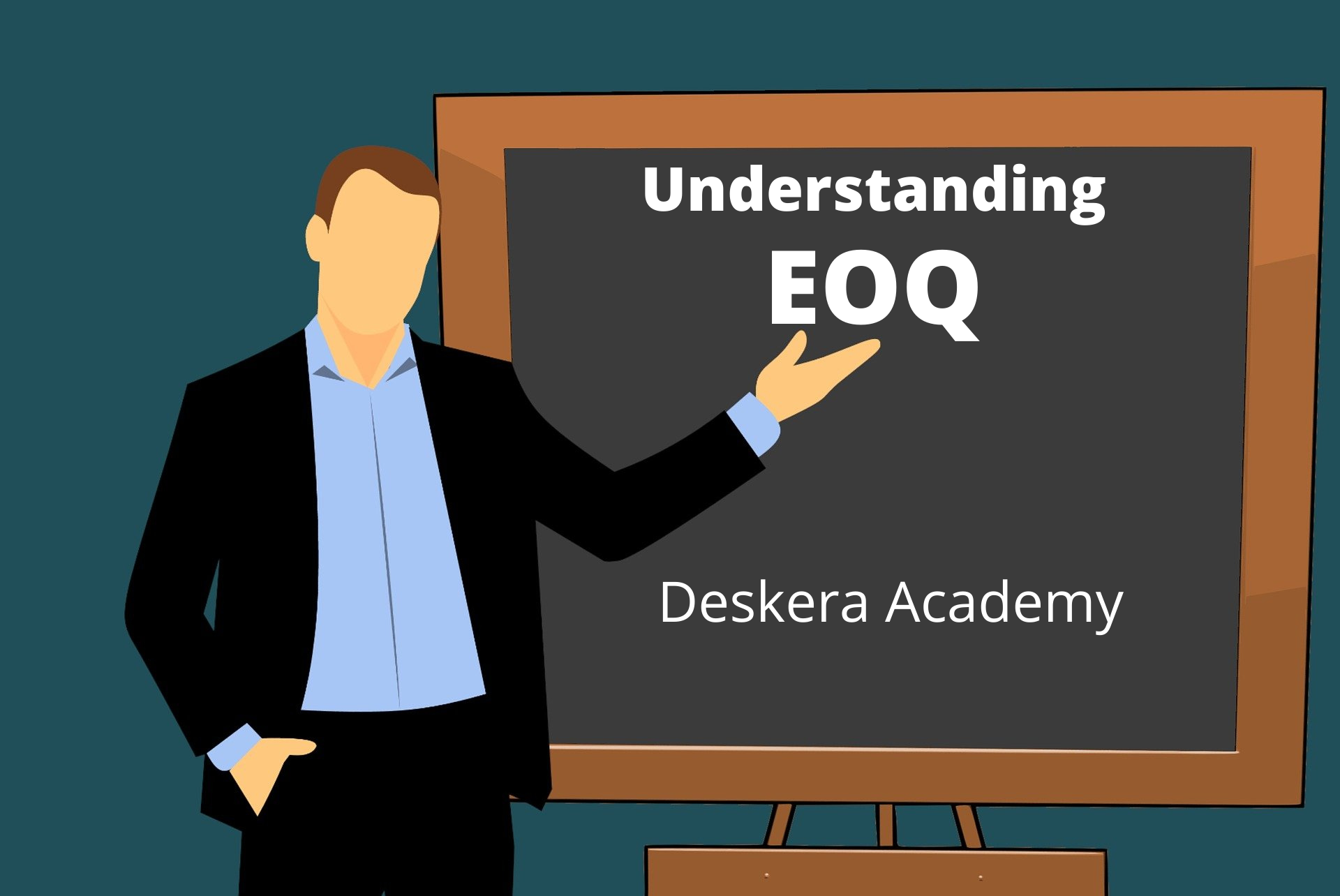A million-dollar question, literally and figuratively in every business, big or small, is “How much to order?”. EOQ helps answer this question.
As a business owner, your main enemies are overabundance and/or shortage of goods. When you have inventory in large quantities sitting in your warehouse and no one to dispatch them to, it adds to your costs. At the same time, if you don’t order enough goods, you will fail to fulfill your customer’s demands.
How can you determine the right quantity to order so that your demand and supply are matched?
We have a solution for you.
It’s Economic Order Quantity.
Before you start wondering or googling what EOQ is and how it can help you, don’t go anywhere because you are at the right place already. You will find all the information related to EOQ in this article.
Let’s start with the basics and learn what EOQ is.
What is EOQ?
EOQ, an acronym for Economic Order Quantity, is the ideal amount of order your organization should buy. It limits the inventory costs such as holding, shortage costs, and order costs. It helps companies maintain a consistent inventory level and is considered one of the most efficient techniques in inventory management.
There is only one limitation to EOQ, it assumes the demand of the products to be constant as it considers historical sales records to determine the demand. However, you can turn that limitation into an advantage by studying the historical records thoroughly and highlight the change/hike, extra demand observed for the product every year. Consider the running trends as well and base your EOQ on that.
Before we learn how to calculate EOQ and its benefits, let us look at the factors required to do the calculation.
Factors to Calculate EOQ
The EOQ formula comprises three factors, holding costs, annual demand, and order cost. Without these factors, you cannot calculate EOQ, so let us quickly understand what these three factors stand for.
Order cost (S): Order cost is the cost of processing an order from a supplier. It includes the cost of preparing an order, loading cost of the goods, unloading costs, transportation costs, taxes, stocking the items when they arrive, and so on. Order costs are recurring costs that happen on every order. Whenever you order your products or raw material these costs will kick in. To avoid paying order costs with every order you place, order goods you require at once.
Another point to remember is that the purchase cost of the goods is different from the cost of goods sold.
- Holding Cost (H): Holding costs is associated with the inventory that remains unsold in your warehouse. It includes the price of goods damaged or spoiled, as well as that of storage space, labor, and insurance.
- Annual Demand (D): As the term suggests, it is the demand for the product over the year. You can look into the records of the product to ascertain its demand in the market, whether it is doing well or barely selling itself.
The holding cost and ordering costs required to determine the EOQ can be easily found on your balance sheets and profit & loss statement.
Note: If you have a high ordering cost, your EOQ will be high too. However, when your holding costs are high you will have a low EOQ.
We hope you have understood what holding cost, annual demand, and order cost are. Now let us learn how to calculate EOQ using the three factors.
EOQ Formula and Example
EOQ Formula:
EOQ = √ (2DS / H)
D= Annual Demand
S=Order Cost
H= Holding Cost

Let’s learn how to calculate EOQ with the help of an example.
A clothing shop has white graphics t-shirts, and the shop sells 1,000 of them each year. It costs the company $4 per year to hold the t-shirts in their inventory, and the fixed cost to place an order is $2.
D= 1,000 units
H= $4 per order
S= $2 per order
EOQ= √ (2 x 1000x 2 / 4)
EOQ= 31.622
The economic order quantity for white T-shirt would be 31.622 units
Now that you have understood how to calculate EOQ, you definitely want to know the few benefits of calculating EOQ for your business.
Benefits of EOQ
EOQ can positively impact your company in both the short term and the long term of your business. Let us see how.
Here are a few benefits of EOQ we have compiled for you.
Minimizes Inventory Costs
With the help of EOQ, you can make the best decisions about ordering, storing, and managing your goods in the company. Especially when storing inventory in your warehouse, which is an expensive operation, EOQ is a must. Particularly for private companies and micro-businesses.
The prime advantage of calculating the EOQ is that it helps determine how much stock to order for a particular product in a certain period. EOQ undoubtedly decreases overstocking of goods and inventory costs as you foster a better understanding of the number of goods required.
Helps You Find the Best Deal
Throughout the year, your vendors try to sell goods in large quantities to you by advertising cheap deals to fight their competitors and earn profit from you. If you fall into this trap of stocking up goods you are getting for cheap, you will overstock goods and increase your inventory cost.
EOQ allows you to make the best decision for your company by telling you exactly when and how much you should order. As a result, vendors cannot fool you into buying lots from them.
Minimize Shortage of Goods
In your world of business, customer satisfaction is a short-term target that you want to achieve daily. Your journey to customer satisfaction starts by providing the product your customer needs without any hurdles. However, what if you run out of the product? Nightmare right?
EOQ helps you ascertain when to re-order the goods and how regularly. By determining the number of goods you need, you won’t encounter any stockouts in your business. Ordering in less quantity might be more financially savvy for your business, or it can play a reverse card on you. Hence, with EOQ, you decide on a definite quantity of goods you must order than just basing your business on mere assumptions.
We hope these compelling benefits have convinced you to start calculating EOQs in your company.
Over to You
With the use or practice of EOQ in your business, you can improve your inventory management process and the overall performance of your company. Another important metric that you should be aware of when managing inventory is the Inventory Turnover Ratio.
An easy way to streamline inventory for your business is to get Deskera. Deskera makes it easy to calculate EOQ with real time reports on inventory cost, sales, and movement.







